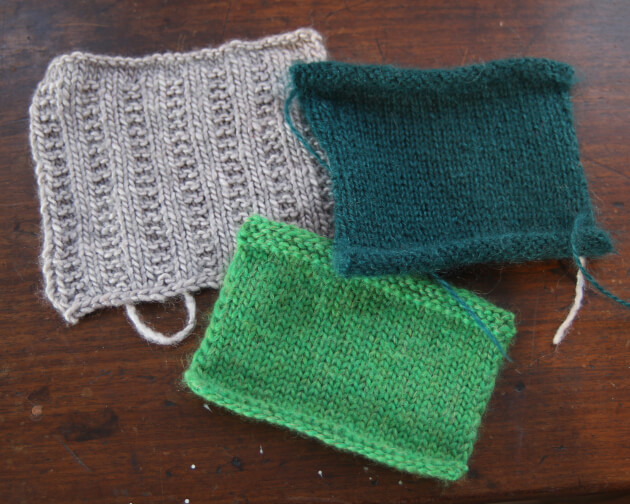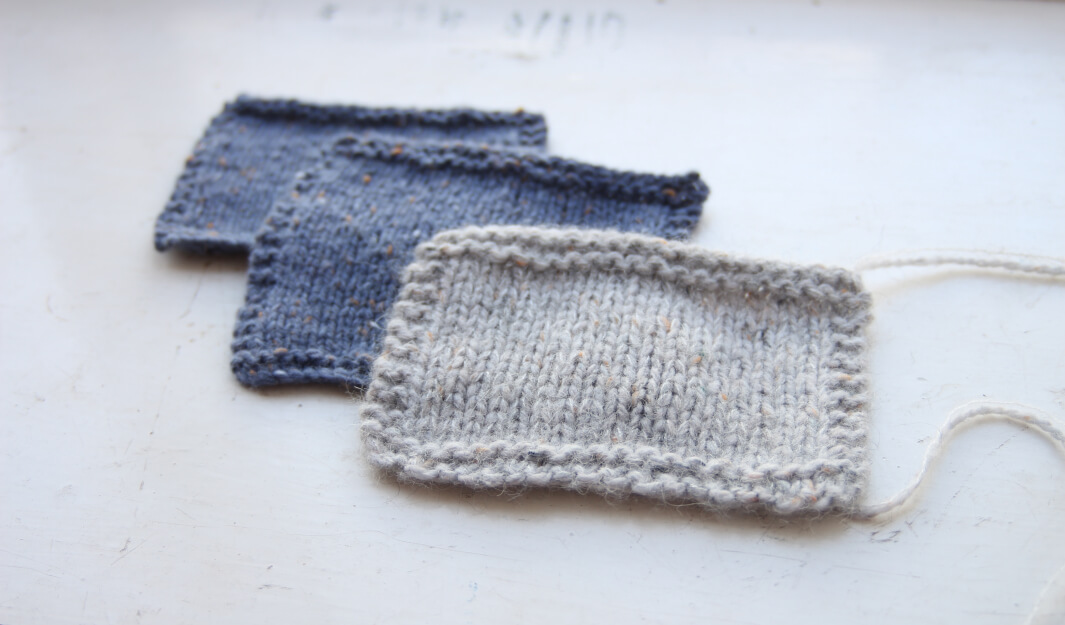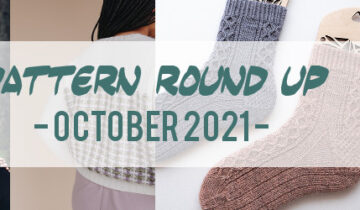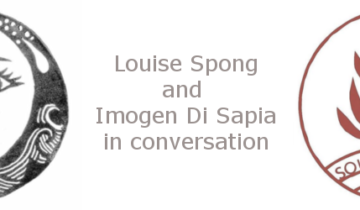One of the first questions we ask when people come in to the shop with a project that’s gone wrong is: did you do a gauge swatch? Gauge (also known as tension) is one of the most important things to check before starting a new project, for multiple reasons!
Read on to find out why it’s so important, and what to do if you can’t get it.
What is gauge / tension?
Gauge refers to the amount of stitches and rows that make up a 10 x 10 cm (4 x 4 inch) square. There are multiple factors that will affect this: the stitch pattern, the yarn, the needle size, and your own personal tension.
Everyone knits differently, and two people using the exact same yarn and needle size, with the same amount of stitches could make an entirely different sized square due to how tight or loosely they knit.
A good pattern designer will always include the tension in the beginning notes of the pattern and usually in the pattern listing – this way you can swatch if you have a particular yarn you’re wanting to use to make sure you can get tension before buying the pattern.
You may find in some patterns that there’s a large gauge but they’ve suggested a very thin yarn such as lace weight. This is purposeful – for creating a particular texture. An example of this is the Cloudbow by Reed Keyes. It uses a lace weight yarn and 6.50mm needles for a gauge of 12 stitches and 16 rows. This large needle size combined with thin yarn, creates a meshy, open fabric that is very sheer and has lots of drape.
Equally, this can be seen the other way round with thin needles and thick yarn. This will create a very tight, sturdy fabric that has little stretch to it, a technique often used for accessories like bags that you want to keep their shape.

Why do I need to gauge swatch?
Mentioned briefly above, everyone knits with different tension. Gauge swatching will ensure your garment – or whatever it is you’re making – comes out the size it was intended by the designer.
Another reason to swatch is to see if you like the end result of the knitted fabric. Though you might get the tension right, you may not like the feel of the yarn knit on that particular needle size etc. It’s good to find this out on a small tension square, rather than knitting half a jumper and finding out then.
A gauge swatch will show you how the yarn behaves once it has been knit and washed. How much drape it has, how soft it is, and if it’s a multi coloured or speckled yarn it will also show you how it looks once knit up, which is often very different to how it looks in the skein / ball.

What if my swatch comes out bigger or smaller than it’s supposed to?
If this happens – that’s fine! Don’t panic. You will just need to adjust the size of your needles. If you have more stitches in your square than the gauge of the pattern, this means you have tighter tension and will need to size up at least one needle size.
Likewise if you have too little stitches in your square, this means you have looser tension. You will need to size down at least one needle size.
You will need to keep knitting tension squares with your adjusted needle size until you do meet gauge.
Sometimes, it’s just not possible to get gauge with a particular yarn! The stitch count tends to be more important than the row gauge. This is because the stitch count will affect the overall width of a garment. If you’re a confident knitter and you meet stitch gauge but not row gauge, you can adjust the pattern accordingly.

Do I need to swatch for everything?
Not necessarily, no! For things like garments or anything that you want to be a particular size, it is important yes. But for things such as shawls, scarves, blankets etc. that don’t need to fit you in a particular way, gauge swatching isn’t 100% necessary.
Not doing a gauge swatch can affect the final size of the pattern, and you may also find it affects the meterage or amount of yarn that’s recommended in the pattern.
Swatching flat or in the round
Another factor that can affect your gauge is whether you’re knitting flat or in the round. This is because a lot of people purl looser than they knit. For this reason, the row tension especially can be affected.
Therefore, if you are making a swatch for something you will be knitting in the round, it is best practice to swatch in the round too. To do this, it is similar to knitting an i-cord.
With circular needles or DPNs, cast on and knit your first row, then rather than turning your work to purl, slide the work back to the right side of the needle, leave a float behind your work long enough that it won’t pull the work in, and re-knit the row!

What to do with all of my gauge swatches?
Some people undo their swatches to be able to incorporate the yarn used in their project.
One way to make them useful is to write a little note of what the yarn is and what needle size you used. That way if you ever want to make something with the same yarn you can refer back to that swatch rather than having to make a new one, if you’ve forgotten what your tension was.
Another idea that I think is really lovely, is to make a patchwork blanket out of them. Assuming you knit with different thicknesses, it may end up looking a little wonky – but that’s what makes a patchwork blanket so charming!
It’s also a nice way to be reminded of all of the projects you’ve made, as each little square represents a finished object. Check out this lovely gauge swatch blanket for inspo!
Average gauge per yarn size
Lace 32-40 stitches
Fingering / 4ply 28 stitches
Sport 24-26 stitches
DK 22 stitches
Worsted 17-20 stitches
Aran 15-18 stitches
Chunky 13-15 stitches
Super chunky 8-12 stitches
We hope you found this resource helpful, and until next time.. happy knitting!




 No products in the basket.
No products in the basket.